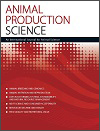Animal Production Science
Volume 64
Number 17 2024
Ruminant milk components are increasingly recognised for human health benefits (e.g. functional fatty acid composition) or indicators of nutrient supply (e.g. milk urea). This experiment investigated the effect of including lucerne at 40% of the traditional diet of perennial ryegrass-white clover mix on milk production and composition. The findings showed that lucerne can improve dietary protein supply during periods of deficiency and increase the concentration of functional fatty acids in the milk of grazing dairy cattle.
This article belongs to the collection: Australasian Dairy Science Symposium 2024.
Piglets face many survival challenges after birth, and maternal beneficial influences can aid in their survival. This study found that supplementing a sow’s diet during pregnancy with 3% purified fiber mixture could beneficially impact the piglets’ microbiota profile and immunity. These results can provide some theoretical support for the subsequent better development of weaned piglets.
The use of guardian animals to protect livestock is becoming an increasingly popular form of predator deterrent. This survey examined how Australian sheep producers use guardian alpacas. The producers believed that alpacas are an effective form of predator deterrent, noting their worth as guardian animals by increasing lamb survival. In addition, these findings have also provided knowledge, such as how these animals are being managed with sheep and information for producers looking to invest in guardian alpacas.
Cold stress during the first week of rearing negatively impacted broiler chicks from 29-week-old breeders compared with 42-week-old breeders, leading to higher corticosterone levels, and reduced yolk sac absorption and crop filling. Chicks from 42-week-old breeders showed better overall performance, with higher body weight and feed intake regardless of environmental temperature. The study highlights the importance of maintaining thermal comfort for optimal chick development, particularly that from younger breeder flocks, to mitigate stress, and improve viability and growth performance.
In the feedlot, during the latter phase of finishing, animals show lower efficiency because weight gain is more directed to fat than protein. Several strategies are used to change the gain composition during this phase, such as beta-agonist zilpaterol (ZH), but the effectiveness of ZH can be affected by several factors. This is the first study that has provided information that the effectiveness of ZH in fattening lambs is independent of the energy concentration in the finishing diets.
The influence of rumen fermentation, diet selection and animal activity on variation in liveweight (LW) gain of growing cattle grazing mixed tropical pasture was found to be minimal. Small but significant differences were mostly observed in the wet season. In the absence of major differences in measured variables, it is speculated that variation in LW gain is due to unmeasured phenotypes such as efficiency of nutrient use or voluntary intake.
Conception rate, which is an important parameter to evaluate female fertility, has been gradually decreasing in Japanese Black cattle during the past decades. In this study, we found a non-synonymous variant of the MLH3 gene that has been reported to be involved in meiotic recombination rate is also significantly associated with conception rate. This novel variant is suggested to use as a potential marker for selecting the Japanese Black cattle for improving fertility.
This article belongs to the Collection Sustainable Animal Agriculture for Developing Countries 2023.
Inconsistent pork quality, especially tenderness, is related to differences between supply chains and breeds. We investigated differences between supply chains, breed, and muscle metabolism and identified the influence of muscle fibre proportion on pork quality. Pork loins with increased proportions of oxidative fibres, from small supply chains rather than large modern commercial supply chains, have improved quality.





